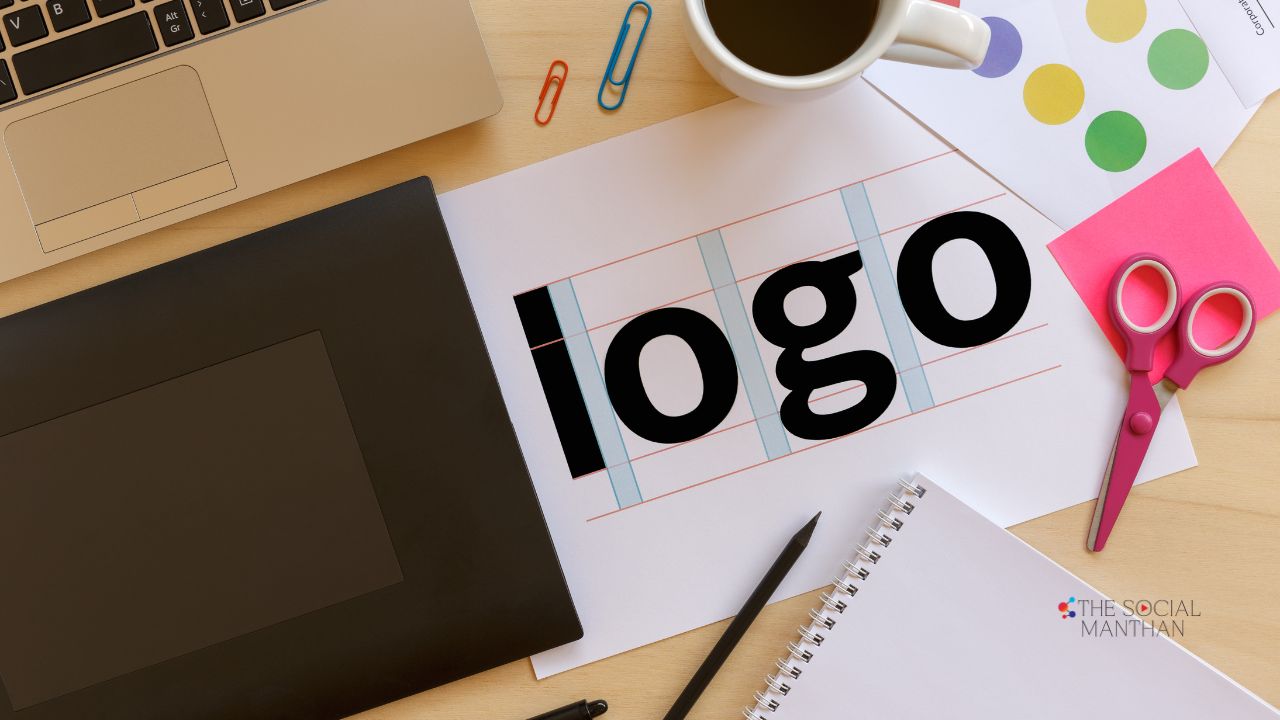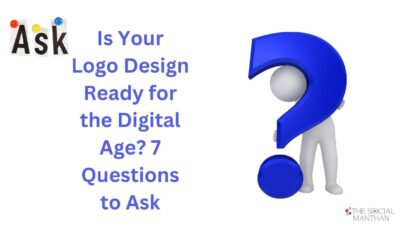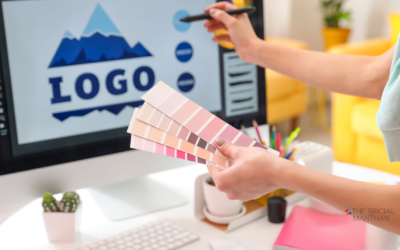You may be wondering what truly defines a great logo for your brand. To ensure your vision is effectively captured, it’s crucial to engage in meaningful discussions with your designer. Asking the right questions not only helps clarify your intentions but also guides the design process toward a result that resonates with your audience. In this post, we’ll explore imperative inquiries that will empower you to collaborate successfully with your designer and create a logo that stands out and communicates your brand’s identity effectively.
Key Takeaways:
- Clarity and Simplicity: A great logo should be easy to recognize and understand at a glance, avoiding unnecessary complexity.
- Relevance and Alignment: The logo must resonate with your brand’s identity and target audience, ensuring it communicates the right message.
- Versatility: Effective logos should maintain their visual impact across various mediums and sizes, from business cards to billboards.
Understanding the Importance of a Great Logo
The significance of a well-designed logo cannot be overstated in today’s competitive marketplace. Your logo serves as the face of your brand, capturing the essence of what your business represents in a single image. It is often the first element of your brand that potential customers will encounter, making it a vital component in establishing your identity. A great logo not only conveys professionalism and reliability but also helps to build trust with your audience. Keep in mind, when a customer sees your logo, they should immediately associate it with the values and quality of your products or services.
How a Logo Represents Your Brand
Importance of a logo transcends mere aesthetics; it plays a critical role in your branding strategy. A well-crafted logo communicates your company’s mission, vision, and values at a glance. By incorporating elements such as color, typography, and shapes that resonate with your target audience, you create an image that fosters recognition and loyalty. For instance, vibrant colors might evoke feelings of excitement or energy, while muted tones might suggest professionalism and reliability.
Your logo should encapsulate the essence of your brand and differentiate it from competitors. This representation is crucial, as it influences your marketing efforts and contributes to your overall brand narrative. A strong logo can easily adapt across various platforms, from your website to social media, maintaining a consistent identity that strengthens your brand’s presence in the minds of consumers.
Factors that Influence Logo Effectiveness
Even the most visually appealing logos can fall flat if they do not effectively convey the brand’s message or fail to resonate with your audience. A variety of factors contribute to the effectiveness of your logo, including simplicity, versatility, relevance, and memorability. Ensuring that these elements are well-balanced can lead to a more successful logo that stands the test of time.
- Simple yet memorable designs tend to stick in the minds of consumers.
- Your logo should be versatile enough to work across different mediums and sizes.
- Relevance to your industry and target audience is vital for creating a connection.
- Consistency in branding is necessary for building trust and recognition.
Logo effectiveness can also depend on the responsiveness of the design to current trends without losing its core identity. This adaptability ensures that your logo remains relevant as consumer preferences evolve. Working closely with your designer to prioritize these factors is crucial in creating an impactful logo that makes a lasting impression.
- Be sure to think about how colors evoke emotions and perceptions.
- Consider how typography can convey the tone and personality of your brand.
- Analyze how your logo can connect with both existing and potential customers.
- Thou should always strive for a design that resonates on a deeper emotional level.
Key Questions to Discuss with Your Designer
There’s a multitude of imperative questions that you should deliberate on with your designer to ensure that your logo aligns with your brand’s identity and strategic goals. Engaging in these discussions not only clarifies your vision but also empowers your designer to create a logo that makes a lasting impact. Below, we’ve outlined some of the key questions to address during your conversations.
What are the Core Values of Your Brand?
To effectively communicate your brand’s message through your logo, it’s vital to pinpoint the core values that define your brand’s identity. What principles guide your business decisions? Are you focused on innovation, sustainability, community engagement, or quality? Sharing these values with your designer will enable them to create a logo that resonates appropriately with your audience and reflects what your brand stands for.
By articulating your core values, you provide your designer with the foundation necessary to capture the essence of your brand visually. Strong logos are more than mere visuals; they tell a story and convey the philosophy that underpins your business. The more insight your designer has into your brand’s core values, the more effectively they can represent them through design elements such as colors, shapes, and typography.
Who is Your Target Audience?
Even before devoting time to design elements, understanding who your target audience is can significantly influence the outcome of your logo. Are you appealing to young millennials, families, professionals, or retirees? Each group has distinct preferences, cultural references, and emotional triggers that should inform the logo design. By sharing detailed information about your target audience with your designer, you ensure that the logo resonates with the intended demographic.
Your target audience’s characteristics should guide your designer in the choice of colors, fonts, and symbols that will engage effectively. Consider conducting market research or gathering customer feedback to deepen your understanding of your audience’s preferences and behavior. The more tailored your logo is to your audience, the more likely it is to capture their attention and incite brand loyalty.
What Tone and Emotion Should the Logo Convey?
What tone and emotion do you want your logo to evoke? Your logo serves as the face of your brand; it should encapsulate the overall sentiment you wish to convey. Whether you’re aiming for a playful, professional, or sophisticated vibe, the choices you make about design elements will play a pivotal role in achieving this emotional resonance. Communicating your desired tone to your designer is crucial for creating a successful logo.
Brand emotion is particularly powerful as it directly influences customer decision-making. A logo that communicates trust and reliability might leverage subdued colors and classic fonts, while one that captures excitement and creativity may utilize vibrant colors and playful typography. Therefore, identifying the emotional impact you want your logo to have enables your designer to craft an identity that aligns succinctly with your brand’s message.
What Are Your Competitors Doing?
There’s significant value in analyzing your competitors when designing your logo. Understanding what works well in your industry—and what doesn’t—can inform your design choices and help to distinguish your brand in a crowded marketplace. What logos do you find appealing from your competitors? What commonalities or themes do they exhibit? By asking these questions, you can gain insights that help shape a unique visual identity for your brand.
Comparative analysis allows you to identify gaps in your competitors’ branding that you can capitalize on. For instance, if competitor logos generally rely on minimalist designs, you might choose to explore a more intricate or vibrant logo. Assessing the competitive landscape empowers you to make informed choices that not only elevate your brand’s uniqueness but also enhance its marketability.
Audience perception of your competitors’ logos can provide valuable lessons. By examining how audience emotions are tied to these logos, you can ensure that your own design creates a desired impact and resonates more profoundly with your target demographic, ultimately giving you an edge in your marketing efforts.
Design Process Considerations
Many aspects of the design process contribute to the effectiveness of your logo, and it’s crucial to engage in thoughtful discussions with your designer about these key considerations. Your logo serves as the face of your brand, so understanding the factors that influence its design will help create a strong visual representation that resonates with your target audience. From style preferences to color selection and typography, each component plays a significant role in expressing your brand’s identity and values.
What Design Styles Resonate with Your Audience?
Your chosen design style can significantly impact how your audience perceives your brand. It’s important to discuss with your designer the design styles that resonate with your target demographic. This includes understanding the visual language of your industry, and which elements might evoke emotional responses, making your logo more relatable. Whether you opt for a modern aesthetic, a vintage look, or a minimalist approach, each style sends a message that can either align with or alienate your potential customers.
Consider the brands that you admire and reflect upon their design styles. Share these examples with your designer to give them insight into your preferences and expectations. A collaborative approach will ensure that you ultimately settle on a logo design that not only attracts your audience but also authentically represents your brand’s ethos.
How to Select the Right Color Palette
Designing an effective color palette is crucial as colors evoke emotions and can significantly influence how your brand is perceived. When you discuss color choices with your designer, consider what emotions and ideas you want to convey. Each color has its own psychological implications; for instance, blue often evinces trust and dependability, while red can stimulate passion and energy. Your understanding of color theory and its impact on consumer behavior will empower you to select hues that align with your brand identity.
This process isn’t solely about choosing colors that look good together; it’s also about creating a palette that reflects your brand’s personality and speaks to your target audience. Make sure to explore various combinations and shades, ensuring that the final selection will work well across different mediums—whether digital, print, or merchandise. Your designer should guide you in making informed decisions about color harmony and how your palette can set you apart within your market space.
Choosing the Right Typography for Your Logo
Resonate with your audience by selecting typography that aligns with your brand’s personality. Typography isn’t just about choosing a font; it encompasses style, weight, and spacing. Each letter and character can resonate differently with your audience, conveying professionalism, creativity, playfulness, or tradition. Therefore, it’s crucial to discuss with your designer the type of message you want your typography to communicate. A well-chosen font can reinforce your brand message and create lasting impressions.
Design also plays a crucial role here, as the visual appeal of your typography should complement the overall design of your logo. Balance the typography with imagery, ensuring that the font enhances rather than overshadows other design elements. A thoughtful approach to typography can transform your logo from an ordinary design into a memorable brand statement that fosters recognition and loyalty.
Balancing Simplicity and Uniqueness
Select a logo design that strikes a balance between simplicity and uniqueness. A great logo should be easily recognizable, which is often achieved through clean lines and uncomplicated designs. However, it should also stand out in a competitive landscape. The goal is to create a design that is straightforward enough to be memorable, yet unique enough to differentiate your brand from others. Engaging in an open dialogue with your designer about this balance can lead to innovative designs that embody both qualities.
Right from the onset, prioritize discussing how to streamline your logo without sacrificing its distinct character. The integration of unique elements or unexpected twists on traditional shapes can help your logo to capture attention while maintaining clarity. Ultimately, a well-balanced logo combines simplicity with an element of surprise, leaving a lasting impression on your audience.
Practical Tips for Collaboration with Your Designer
To ensure a successful collaboration with your designer, it’s crucial to engage actively throughout the logo development process. By involving yourself and your designer in meaningful discussions, you can create a logo that not only captures the essence of your brand but also resonates with your target audience. Here are some practical tips to help you collaborate effectively:
- Prepare a brief that outlines your brand values and objectives.
- Share examples of logos you admire to give your designer insight into your vision.
- Be open to ideas and suggestions; your designer is a creative expert.
- Set up regular check-ins to discuss progress and potential roadblocks.
- Keep your feedback focused and constructive to foster a positive design process.
Recognizing the importance of these strategies will lead to a fruitful partnership and a logo you can be proud of.
How to Provide Constructive Feedback
Feedback plays a crucial role in the design process. When providing feedback, be specific about what you like or dislike about the design elements presented to you. Instead of saying, “I don’t like this,” try rephrasing it to, “I feel that the color scheme doesn’t reflect our brand values.” This approach helps your designer understand your perspective and make the necessary adjustments effectively. Additionally, consider the big picture and how the logo aligns with your overall brand strategy when offering your thoughts.
It’s also important to balance your feedback with positive reinforcement. Acknowledge the aspects of the design that work well and resonate with you. This affirmation can inspire your designer and reinforce a collaborative atmosphere, making them more receptive to your suggestions. You might say, “I really like the font choice; it feels modern and approachable, but let’s explore different color combinations.” This method encourages a constructive dialogue that enhances the creative process.
Establishing a Timeline for Logo Development
Clearly defining a timeline for logo development is crucial for keeping your project on track. When you and your designer discuss a schedule, consider deadlines for initial drafts, revisions, and final delivery. Setting realistic timelines helps maintain momentum while allowing space for creative exploration. Be sure to communicate any important dates that may impact the project, such as product launches or marketing campaigns.
Designer timelines should be flexible yet structured, allowing for adjustments if needed. As you work together, it’s important to be understanding of the creative process and the time it may take to refine the logo. This balance will lead to a more thoughtful and compelling final product, aligning perfectly with your brand’s identity.
Importance of Open Communication
Practical communication is vital for a successful collaboration with your designer. From the outset, establish a comfortable line of dialogue where both you and your designer feel free to share thoughts, questions, and concerns. Make an effort to check in regularly, ensuring everyone remains aligned. Open communication fosters trust and enhances the creative process, allowing your designer to better understand your vision and intentions.
This collaborative atmosphere encourages innovation and helps avoid misunderstandings, which can hinder progress. By maintaining transparency about your goals and expectations, you can reduce the likelihood of dissatisfaction with the final design. Keep the conversation flowing, and you’ll find that a strong partnership will result in a logo that effectively represents your brand.
Testing and Revising Your Logo
Once again, it’s important to recognize that the journey of crafting an impactful logo doesn’t end with the initial design. After you have a few drafts in hand, testing and revising become crucial steps that can significantly enhance the final product. Engaging with stakeholders and prospective customers during this phase will help you unveil deeper insights into the effectiveness and appeal of your logo. The feedback you gather can guide you through the process of refinement, ensuring that the final logo resonates with your intended audience and meets your branding objectives.
How to Gather Feedback from Stakeholders
Even before you share your logo drafts with the wider audience, it’s necessary to collect feedback from your immediate stakeholders. These might include team members, business partners, or anyone who has a vested interest in your brand’s success. To facilitate meaningful discussions, you can organize a feedback session where you present the logo concepts and encourage participants to share their thoughts. Ask specific questions regarding color, typography, and overall impression, which can help guide their responses. Furthermore, establishing a safe space for honest opinions encourages genuine feedback, fostering an environment that values constructive critiques.
Conducting Audience Testing for Reactions
Reactions to your logo can vary significantly among different demographic groups, making it vital to conduct audience testing. By gathering a diverse group of potential customers, you can gain real-world insights into how your logo is perceived. This can involve surveys, focus groups, or even social media polls. Pay attention to both qualitative and quantitative feedback; numbers can tell you trends, while personal comments can highlight emotional reactions or associations tied to your design choices.
Understanding the reactions of your target audience can illuminate aspects of the logo that resonate with them and expose elements that may cause confusion or a negative impression. These insights are invaluable and can inform your next steps in the design process.
Revising the Design Based on Practical Insights
An necessary part of the logo development journey is implementing the feedback you’ve received throughout the testing phases. As you revisit your designs, focus on specific areas highlighted during feedback collection—aspects like color schemes, shapes, or fonts that may have stirred mixed responses may need further adjustment. This iterative process is vital, as it fosters a logo that not only fits your brand identity but also aligns well with audience preferences.
Another round of feedback can help validate your revisions. Sharing the updated designs with your stakeholders and target audience allows you to check if the changes resonate more effectively and if the essence of your brand is preserved or even enhanced. Be mindful of, this is a collaborative journey, and being open to ongoing revisions will culminate in a logo that truly represents your brand and makes a lasting impression.
Finalizing and Delivering Your Logo
Your journey to a successful logo doesn’t end once the design is approved; it’s crucial to focus on the final deliverables to ensure you receive everything needed to leverage your logo effectively. This stage is where you confirm that your designer provides you with all necessary files and formats, which will facilitate easy use across different platforms and mediums. Open communication during this phase is key, as you should have a clear understanding of assets that will support your branding efforts moving forward.
What to Include in the Final Deliverables
Deliverables typically encompass a range of file types, including vector files like AI and EPS, which are necessary for scaling your logo without losing quality. Additionally, you should request raster files such as PNG and JPEG in various sizes, as these are suitable for digital use, social media, and print applications. Your designer should also provide a style guide, detailing color codes (like HEX and RGB), typography specifications, and logo usage guidelines, ensuring your brand remains consistent across all channels.
Ensuring Scalability and Versatility of Your Logo
Include a versatile logo design that works well in various applications, from large banners to small social media icons. You want a logo that not only looks good but also communicates your brand identity effectively, regardless of where it appears. Different versions of the logo, such as horizontal, stacked, or monochrome, can enhance its usability across diverse contexts. Make sure you discuss these variations with your designer to ensure you have options that align with different branding scenarios.
Logo scalability is vital for maintaining its integrity whether viewed on a tiny smartphone screen or a large billboard. When your logo can be resized without compromising quality or aesthetics, this enhances its versatility and helps you establish a cohesive brand presence across various platforms. A well-designed logo should transcend its size and format, ensuring it resonates with your audience, regardless of the medium. Make sure to ask your designer how each version of the logo will function in practical applications.
Final Words
Drawing together the various elements discussed, creating a great logo is an intricate process that requires thoughtful consideration and collaboration with your designer. You need to engage in critical conversations that focus on the essence of your brand, the emotions you wish to evoke in your audience, and the practical functionality of the logo across different platforms. By asking the right questions about color, typography, scalability, and brand values, you can form a strong foundation for your logo that truly resonates with your target market. Your input is invaluable, as it helps guide the creative process and ensures that the final product not only represents your vision but also stands out in the competitive landscape.
Moreover, remember that a logo is more than just a visual element; it is the face of your brand and a key to your identity in the marketplace. Your collaboration with your designer should be an ongoing dialogue that evolves as your brand grows. Emphasizing clarity in communication will help ensure your designer captures your ideas accurately while exploring new possibilities. With these key questions in mind and a collaborative spirit, you are well on your way to creating a logo that embodies your brand’s story, mission, and values effectively.
FAQ
Q: What are the imperative elements that make a logo effective?
A: An effective logo typically includes several key elements: simplicity, memorability, timelessness, versatility, and appropriateness. A simple design makes it easily recognizable, while a memorable logo sticks in the minds of consumers. Timelessness ensures that the logo doesn’t follow fleeting trends, allowing it to remain relevant for years. Versatility means the logo works well across different mediums and applications, from business cards to billboards. Finally, the logo should be appropriate for the business it represents, conveying the right message to the intended audience.
Q: How important is color choice in logo design?
A: Color choice is crucial in logo design as it can evoke specific emotions and perceptions about a brand. Different colors convey different messages; for example, blue often represents trust and reliability, while red can evoke excitement and passion. It’s imperative to consider the target audience and the brand’s personality when selecting colors. Additionally, a great logo should work well both in color and black-and-white to maintain its effectiveness in various applications.
Q: What questions should I ask my designer to ensure we create a great logo?
A: When working with a designer on your logo, ask the following questions: 1) What is your design process? Understanding their approach will help you gauge how they translate your vision into a logo. 2) How do you ensure the logo is versatile across different platforms? This helps in evaluating if the logo will be functional when scaled or used in varied settings. 3) Can you explain your color choices and typography recommendations? This will shed light on how these elements connect with your brand identity and messaging. Engaging in these discussions fosters collaboration and provides clarity on the design’s direction.







